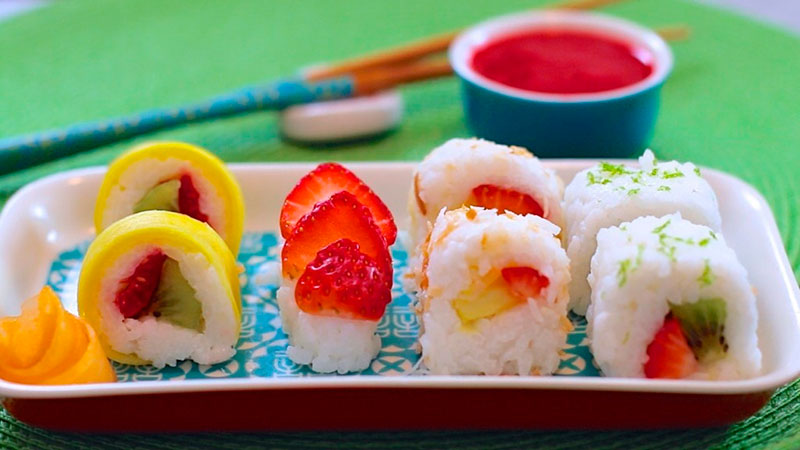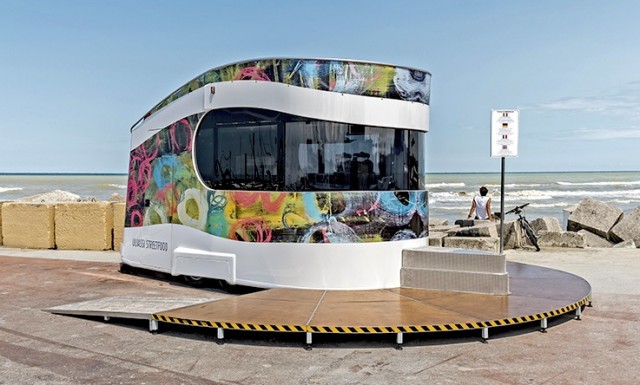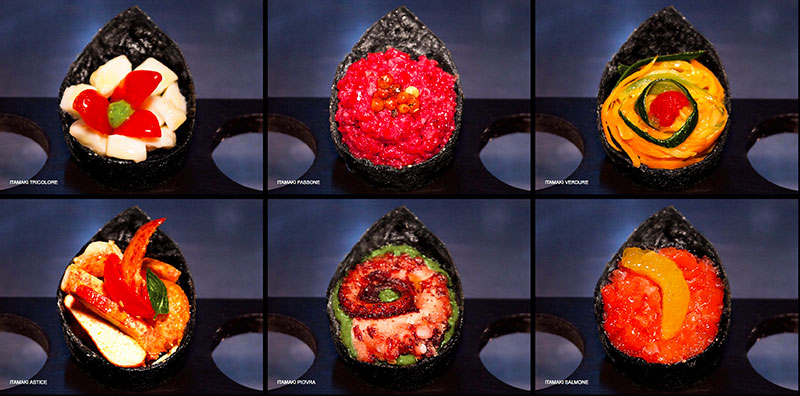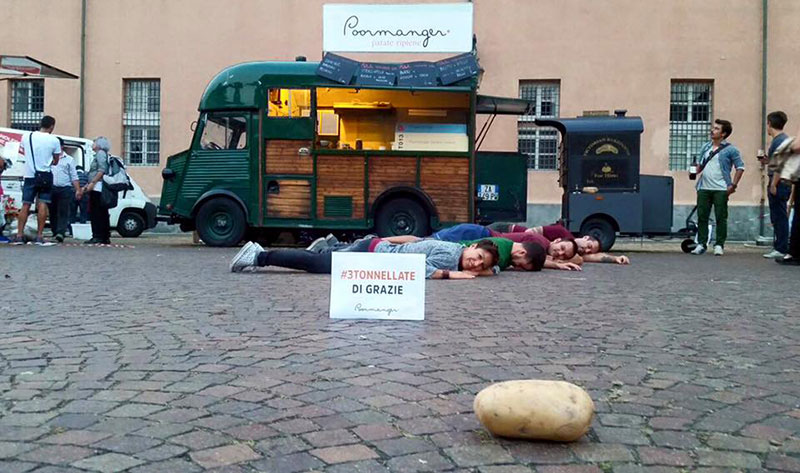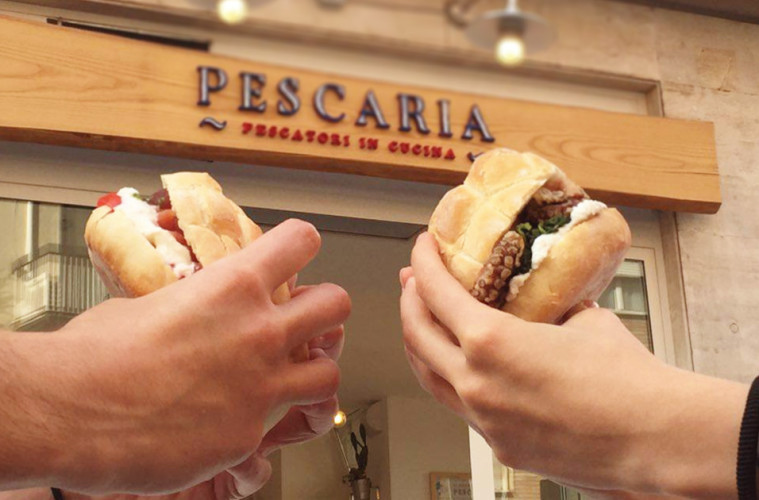In recent years the traditional italian street food together with eating habits are deeply changing stimulated by the cultural ferment around food and healthy eating. Globalization, migrations between countries from all over the world favor the meeting, mixing and mingling of culinary traditions.
The emergence of street food and fast meals, on the other hand, contributes to the modification of customs in the food sector making the transformation under way even more disruptive. In this context it is of no surprise to witness the birth of new dishes, the invention of innovative products, the creation of surprising and original foods together with new business strategies.
At an international level very successful street food projects have taken off pushed by amazing food trucks and/or original dishes.
Here we are to focus on italian examples of innovative dishes. Let’s see some of them.
TRAPIZZINO
The most emblematic italian street food. An invention of the Roman chef Stefano Callegari, who, in 2008, decided to innovate the old widespread habit in Rome to have a snack (the so-called merenda) eating a “white pizza” with a stuffing of cheese and mortadella, creating different types changing the ingredients. Since these ingredients tended to slip out, he decided to replace the traditional round and open shape, typical of pizza, with a triangle closed like a pocket that could hold any kind of stuffing.
So, the trapizzino was born, a mash of tramezzino and pizza, to fill with typical Roman stuffing: vegetables and tripe, picchiapò bollito, misticanza, coda alla vaccinara and so on. The new product, a registered trademark, was launched on the market also in street food mode, with a food truck.
The success was so big that from the Testaccio district in Rome where it was born, it reached Tokyo and New York, it is sold in typical Italian shops with other italian food, becoming a classic of the street food made in Italy.
Trapizzino has 2 locations in Rome (Testaccio, via Branca 88 e piazzale Ponte Milvio), one in Japan, one in the USA and you can find it also in a street food version, thanks to the mobile kiosk of Michelin starred Chef Mauro Uliassi, who offers other versions of the trapizzino, elaborating it with typical ingredients from other regions of Italy: porchetta, fried fish, cuttlefish and peas, chicken cacciatora and so on.
The itinerant kiosk Uliassi Street Good
What does this street food teach us?
Innovating tradition, taking something good and making it new.
ITAMAKI
In Porta Romana zone in Milan there is Itashi, a restaurant that bet on an idea: revisiting a typical Japanese street food with an Italian touch, mashing two culinary traditions very far away, to obtain an innovative hybrid.
We can say they won the bet. The Japanese tamaki, a seaweed cone filled with rice and fish, becomes Itamaki, a cone make with a special dough colored in black with some squid ink, stuffed with the most different and delicious ingredients: red shrimps, octopus, salmon but also Piedmonts fassona meat, ‘nduja and vegetable caponata.
You get an itamaki cone and you eat it while walking, like a snack, tasting an excellence product, a genius fusion between east and west.
What does this street food teach us?
Re-elaborating foreign culinary traditions, creating hybrids between different cultures, innovating other traditions using prime raw materials, can lead to original inventions.
STUFFED POTATOES
3 guys from Turin opened Poormanger, playing on the words “poor eating” but also “pure eating”. They present ingredients from the Piedmont poor food in an original and tasty combination.
Is there a poorer food than potatoes? But, if you bake them, cut them in half, season them with salt, extra virgin oil and then stuff them with tasty and genuine ingredients (grilled vegetables, sausage, taleggio or pecorino cheese, anchovies, onion cream): the result is amazing.
The 3 guys started in a small local in the suburbs and now they own a restaurant in the center of Turin with 8 employees and a food truck with which they attend street food festivals and events.
What does this street food teach us?
Creativity and originality matter more than money, merging simple ingredients in sophisticated combinations can be a smart move.
FISH GOURMET SANDWICHES
It’s in Milan and it’s called Pescaria, the restaurant that transformed the classic stuffed sandwich in a gourmet dish for the after work and a chic street food to eat on the streat.
They are all but simple sandwiches: shrimps and aubergine, salmon and salad, fried octopus and ricotta, are only some of the many delicious ingredients combined in orginal and refined flavours.
In front of the Pescaria in Milan there is a waiting line. Their street food idea is so simple and brilliant that immediately became fashion: everyone talks about it, you gotta try it.
Now only one question: when will you guys get a food truck?
What does this street food teach us?
Sometimes the best ideas come from the simple variation of an old habit, if you can transform a classic product in something more ambitious able to start a trend.
FRUSHI
Rice and fruit sushi… simple as that… Invented in Chicago by the chef of the Orange, Luca Montersino, it has immediately a great success. People like the idea, the combination of tastes and the result is a light and nutritious food that is perfect for every occasion.
In Italy, the artisanal laboratory Mescè in Turin, owned by the Orsero brothers, retrieves that idea and develops it in a street food and take away format. The frushi was presented among other fruit based products offered by “Mescé powered by Fratelli Orsero” at the Salone Internazionale del Gusto e Terra Madre in 2014 aring great interest and enthusiasm.
To this day, frushi remains the most original dish served in the restaurant in Via San Dalmazzo 4 in Turin and also at street food events where Mescé attends. Among fruit juices and smoothies, caramelled skewers and sorbets, frushi are fascinating the visitors. We can say the only missing thing is a proper food truck to finish the work and spread the word.
What does this street food teach us?
Modernizing traditions from different countries, creating hybrids of products, specializing and defining the uniqueness of a project.
ITALIAN KEBAB
Mariù _Italian Gastronomic Kebab is a new kebab concept developed to combine the success of this Middle Eastern traditional food with the quality of Italian raw materials.
It was invented in Milan and its creators tell its story on the website that promotes it: “In a perfect mix of 2 culinary traditions, we get inspiration from Italian cuisine to elaborate a classic food of Middle Eastern cuisine; our condiments can combine perfectly with this dish and with this meat preparation. Also the meat we use comes from Italy and we cook it vertically, Eastern style.”
You can make your own kebab choosing the type of bread and the type of meat, then condiments among vegetables, sauces, cheese and creams; or picking one from the suggested recipes. Just a few minutes and you can taste the kebab made in Italy.
What does this street food teach us?
Take a traditional dish from another culture and elaborate it using local ingredients and the deed is done!
Hot to invent a new street food, i.e. finding new ideas for street food
The original and successful street food invented in the past few years in Italy all have some aspects in common and all emerge in the lively context of high quality restaurant business.
It often starts from an intuition that comes from a simple idea that along the way becomes more articulated, until it reaches the status of innovation and sometimes of genius invention.
The most original and successful street food of the last years have almost always the following common elements:
- they take a traditional food, local or not, and reinvented it in a modern way;
- they combine ingredients and products from different culinary traditions;
- they use quality raw materials;
- they take simple dishes and they modify them to elaborate them.
These four features can be guidelines for anyone who wants to try to invent a unique and innovative product, even though creating a good product not always guarantee to reach success.
In other words, just having an idea is not enough. The examples we brought here show how success in street food business is bound to building a strong brand identity and a coherent communication in line with the brand image.
It’s important to define clearly what are the distinctive features of your brand and to shape them in order to state the uniqueness of the brand, not forgetting to find the best way to communicate it in a creative and original way.
In all successful business cases, it is evident that they made a great work in communication at 360°: logos, slogan, pictures and images, menus, packaging, décor and food truck for itinerant promotion, attending events, using social media to involve and loyalize the client.
All can contribute to promote a strong brand identity, to stimulate the word of mouth and to create value for the company. Supporting the product with a clear marketing and communication strategy becomes essential.
Creating an innovative and original street food is not simple, selling it in the best way also using street marketing can be complicated, but with passion and a good team that supports the project, everyone can succeed in becoming a protagonist of the street food world.








